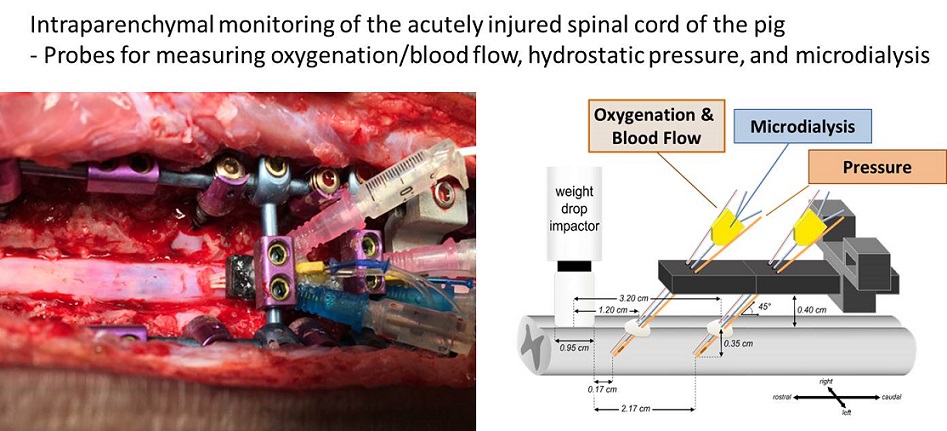


Posted December 20, 2016
Brian Kwon, M.D., Ph.D., University of British Columbia

Brian Kwon, M.D., Ph.D., University of British Columbia
Dr. Brian Kwon, a surgeon-scientist from the University of British Columbia, is widely recognized for his work developing effective strategies to promote functional recovery after spinal cord injury (SCI). In addition to three current Spinal Cord Injury Research Program (SCIRP) awards, he has six additional spinal cord research-focused active grants from other funding sources and actively manages patients with acute SCI. Through the three awards from the SCIRP, Dr. Kwon is addressing critical questions in the early management of acute spinal cord injury that can significantly impact patient outcomes.
The first of Dr. Kwon's SCIRP awards, "Optimizing Hemodynamic Support of Acute Spinal Cord Injury Based on Injury Mechanism," aims to determine how hemodynamic support of mean arterial pressure (MAP) in the presence or absence of spinal cord compression affects the vascular, metabolic, biochemical, and behavioral outcomes of traumatic SCI. Dr. Kwon hypothesizes that well-intended increases in MAP after decompression contribute to detrimental edema/swelling, hemorrhage, and increased intraparenchymal pressure, in addition to exacerbating ischemia-reperfusion injury mechanisms. To test this hypothesis, Dr. Kwon will utilize a novel pig model of SCI to achieve a better understanding of how the spinal cord responds to alterations in MAP before and after decompression. The outcomes of this study may provide insights that could be deployed rapidly into clinical practice to optimize the hemodynamic management of acute SCI.
The second of Dr. Kwon's SCIRP awards, "Spinal Cord Swelling and Alterations in Hydrostatic Pressure after Acute Injury," proposes to determine how intraparenchymal spinal cord pressure changes over time after surgical decompression has been performed and what affect this has on spinal cord perfusion and downstream metabolic responses in the spinal cord. It seems intuitive that surgical decompression in an expeditious manner would improve neurologic function. However, it has been surprisingly challenging to demonstrate the beneficial effects of early surgical decompression in clinical studies of human SCI and this study is focused addressing this gap in understanding to inform and improve current clinical practice for acute SCI. Dr. Kwon hopes his findings could be translated "from bench to bedside" to help clinicians better understand how to manage acute SCI patients, both surgically (by opening the dura mater and expanding the space for the spinal cord to swell into) and medically (by defining the best blood pressure management for supplying an adequate blood supply to the injured cord). Optimizing the clinical management of patients with acute SCI has the potential to significantly improve neurologic function.
Dr. Kwon's third and most recent award is titled, "Noninvasive Optical Monitoring of Spinal Cord Hemodynamics and Oxygenation after Acute Spinal Cord Injury." In this award, Dr. Kwon plans to develop an implantable near infrared spectroscopy (NIRS) sensor and system that can be used to provide noninvasive, real-time measurements of spinal cord oxygenation, blood flow, pressure, and metabolism in acute human SCI and test the hypothesis that a NIRS sensor positioned extradurally can provide real-time measurements of tissue oxygenation, perfusion, and hydrostatic pressure within the underlying spinal cord adjacent to the site of traumatic injury over the course of 7 days post injury. The hemodynamic management of acute SCI patients would be greatly advanced by such a noninvasive method for monitoring the spinal cord's oxygenation and perfusion status. He states that monitoring real-time feedback about the actual physiologic impact of treatment interventions on the injured spinal cord would be a huge benefit for clinicians and could improve the outcomes of many acute spinal cord surgeries. Taken together, Dr. Kwon's proposed initiative will accelerate the clinical introduction of this health care technology (NIRS) and will facilitate practice guidelines for the hemodynamic management of acute SCI by informing clinicians of how their interventions are actually affecting spinal cord oxygenation and perfusion.

Links:














